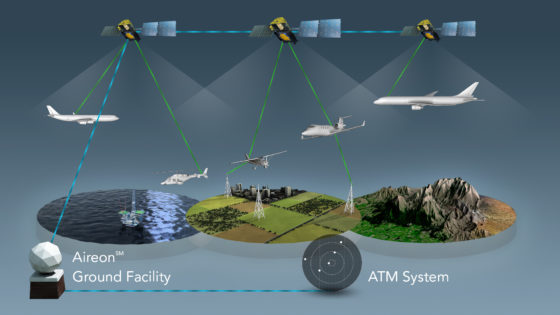Latest News

Aireon global space-based ADS-B diagram. Photo: Aireon
The Federal Aviation Administration (FAA), Nav Canada and Aireon completed two successful flight tests of the company’s satellite-based Automatic Dependent Surveillance-Broadcast (ADS-B) system in December with a reported receipt of more than 100,000 messages. The FAA’s testing took place between New Jersey and New York, while Nav Canada’s testing happened in Edmonton airspace. Both used ADS-B transponders operating at 125 watts. Nav Canada’s Director of Flight Operations Anthony MacKay said that everything used in the test is commercially available other than the down-tuned power output on its ADS-B system.
Around one-third of the 66 Aireon ADS-B receivers, which are designed to avoid the line-of-sight limitations of traditional land-based ADS-B and radar, successfully received data during the tests. The idea is that each receiver has an independent opportunity to receive the data, creating a redundancy that Aireon considers vital to authenticating position information.
Aireon is attempting to position its satellite-based ADS-B as a full-spectrum, global solution. The network of what will ultimately be 75 orbiting satellites (with 6 grounded spares) that house the receivers is expected to be finished in mid-2018.
Get the latest Via Satellite news!
Subscribe Now